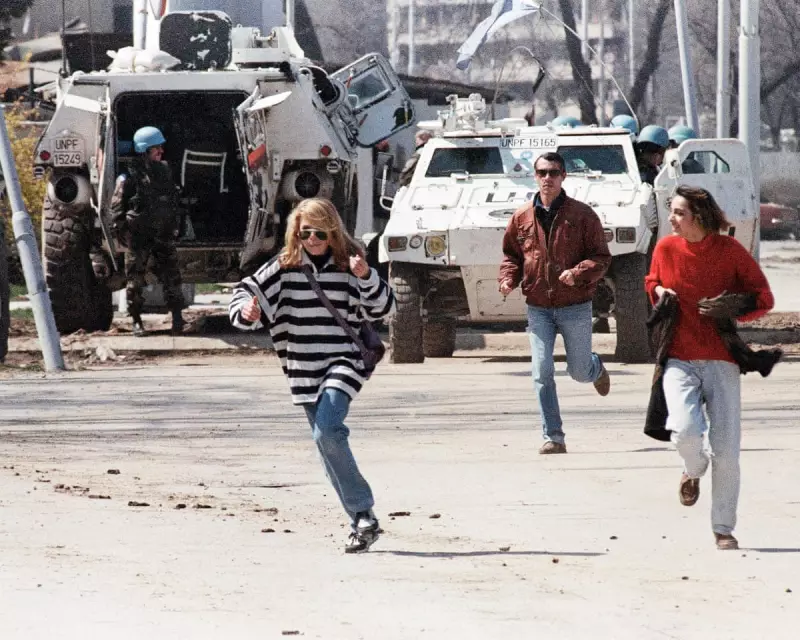
The Unseen Terror: Life in the Crosshairs
For nearly four years, the residents of Sarajevo endured a living nightmare, trapped in their own city and living under the constant threat of death from the surrounding hills. More than 10,000 people lost their lives between 1992 and 1996, with shelling and sniper fire claiming victims indiscriminately. Of all the dangers, the unseen snipers instilled a unique and pervasive fear, capable of cutting down ordinary people as they went about their desperate daily struggles for survival.
A City Under Fire: The Daily Struggle for Survival
The city's main boulevards, infamously dubbed 'Sniper Alley', became deadly gauntlets. Civilians were forced to run for their lives across exposed streets, often using United Nations armoured personnel carriers as makeshift shields, as seen on 6 June 1995. The most basic human needs became life-threatening endeavours. A poignant photograph from 23 August 1993 shows a child collecting water from a puddle, shielded only by a car on Alipašino Polje Avenue. Long queues for water, sheltered by streetcars, became a common sight, a testament to the resilience of a population determined to live.
The architects of this suffering, Bosnian Serb leaders Radovan Karadžić and General Ratko Mladić, observed their strategy unfold from the nearby town of Pale in August 1993. From their positions on Mount Trebević, Bosnian Serb soldiers had a clear, deadly view of the city below, turning the slopes into a platform for terror. The conflict's brutality was captured in stark moments: a man carrying a bloodied, wounded child to hospital on 22 August 1995; UN peacekeepers using a blanket to collect a sniper's victim on 14 May 1995; and the horrific aftermath of a mortar shell attack near the Markale marketplace on 28 August 1995.
A Legacy Etched in Memory and Justice
Even decades later, the shadows of the siege linger. The legal and moral reckoning for the events in Sarajevo continues, with recent developments such as the legal complaint against the Serbian president in the 'sniper-tourism' case ensuring that this dark chapter is not forgotten. The view from Mount Trebević in 2012, twenty years after the war began, serves as a silent, haunting memorial to the suffering that unfolded in the valley below. The story of Sarajevo's siege remains a powerful and tragic lesson on the human cost of war and the enduring strength of the human spirit in the face of unimaginable adversity.





